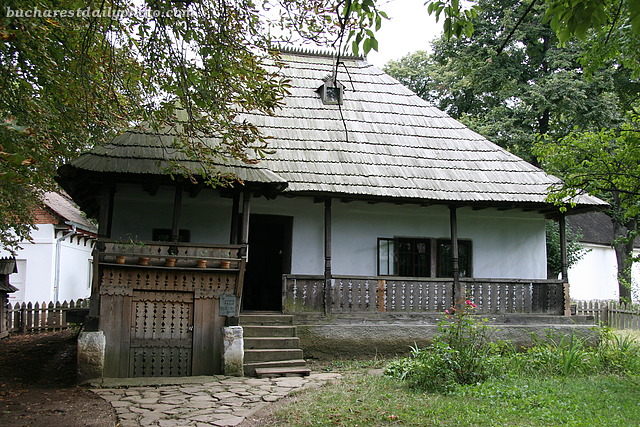If you find yourself in Bucharest and don’t plan to visit Romania’s rural areas – and even if you do – you shouldn’t miss this museum which is one of the largest of its kind in Europe. Established in 1936, the museum is a extraordinary open air collection of over 300 wooden houses, windmills and watermills, churches, barns, gates, sheds etc brought from all over Romania in pieces and reassembled on the museum grounds located on the edge of Park Herăstrău. Behind the project from the start was ethnographer Dimitrie Gusti (1880 – 1955) who wanted the museum to mirror as closely as possible the aspects of the rural life. Because of this the museum is organized as a real village, with clusters of houses being linked by winding paths. This makes for a pleasant stroll especially if you find yourself in Bucharest during the summer, when the city is hot and dusty. The oldest houses date as far back as the 18th century. Sometimes the museum hosts crafts fairs, exhibitions and folk music and dance festivals. The house in today’s photograph is from Trăisteni, Prahova, a village about 120 kilometers from Bucharest and it dates from the 19th century.
Oct 172009

A good idea, and it seems quite well realized.
I've never been here, though I have been to the one in Sibiu which is enormous and exhausting! I do mean to visit the Bucharest museum though – next time! (whenever that will be!).
Jackie (Glasgow/Sibiu)
Both the park and the museum are very pleasant. I seem to remember an old wooden church and some windmills – as well as the many regional styles of cottages.
I like the idea although it feels a bit like a historical Disneyland. You know, I mean, the houses and churches are real and old but they are randomly put together. The geographical context is missing. On the other hand, these buildings might be lost forever otherwise.
I agree that it is a bit like historical Disneyland. Everything in the Village Museum looks new and shiny and fills you with nostalgia for a rural life found only in the Russian novels while if you go to Romania's rural areas the reality is much harsher. There life is not about pretty houses but rather lack of running water, unpaved roads and mud up to the knees. But despite that the museum is pretty nice and well organized and yes, without it the houses would have been lost forever.